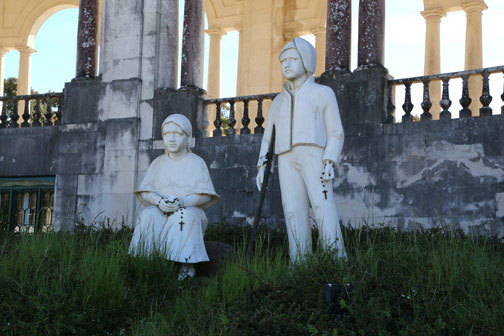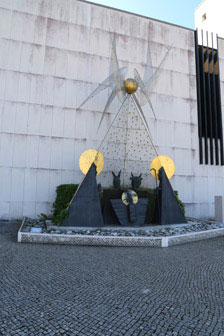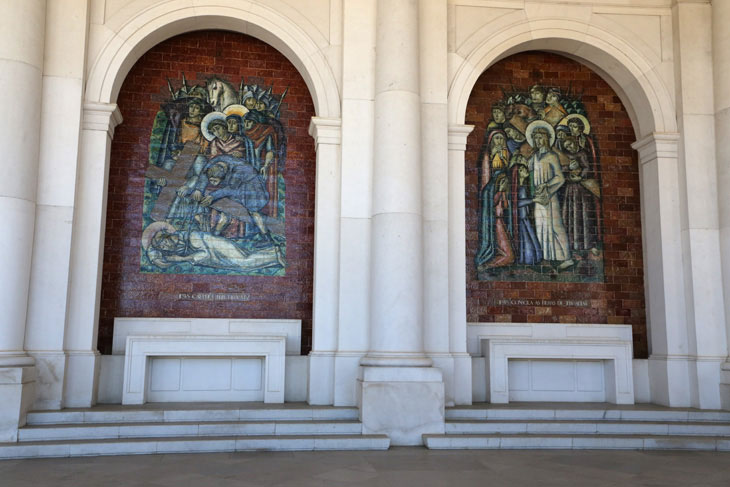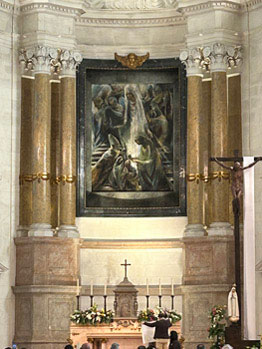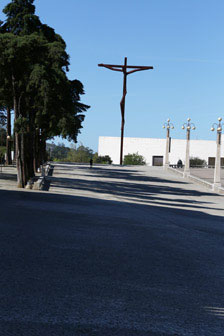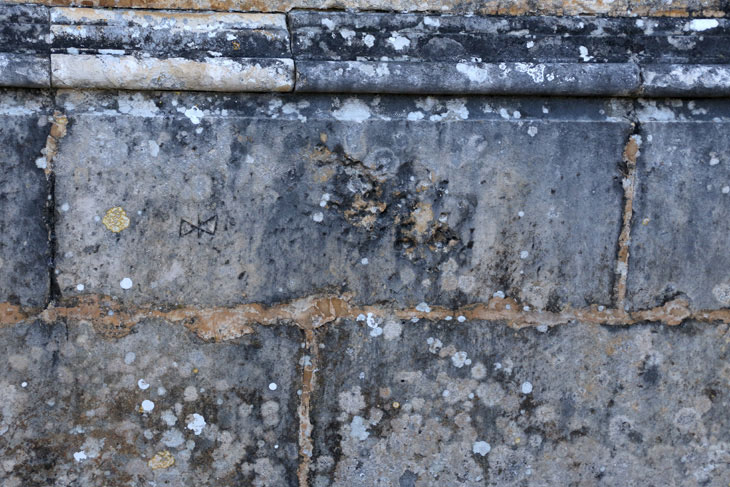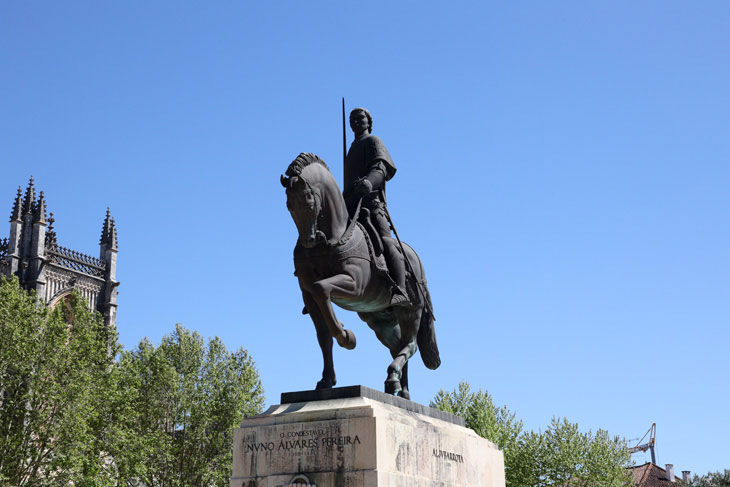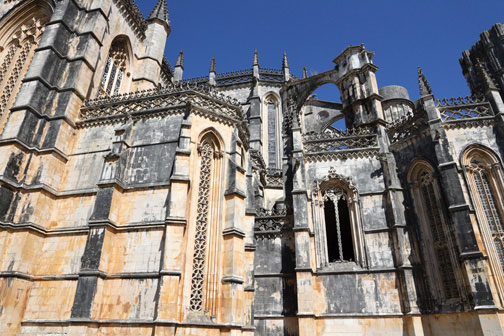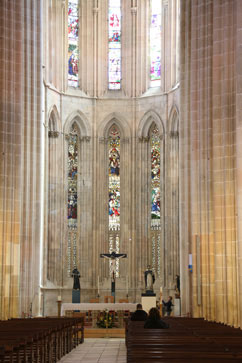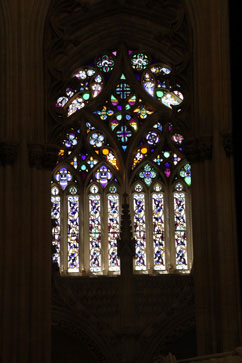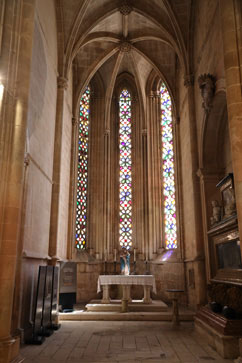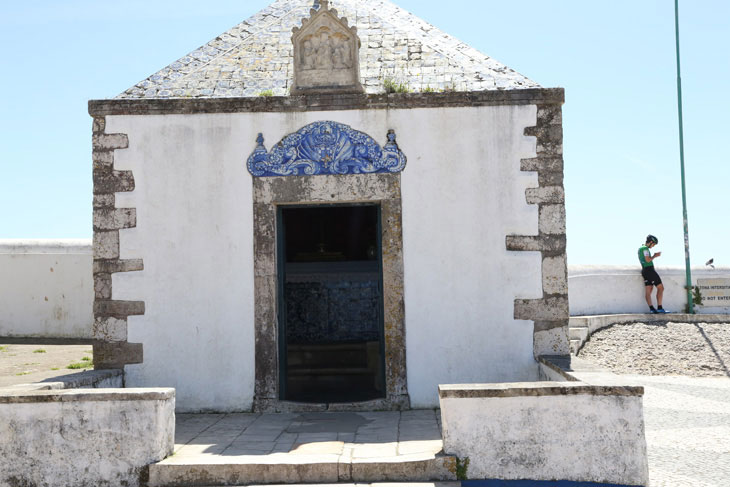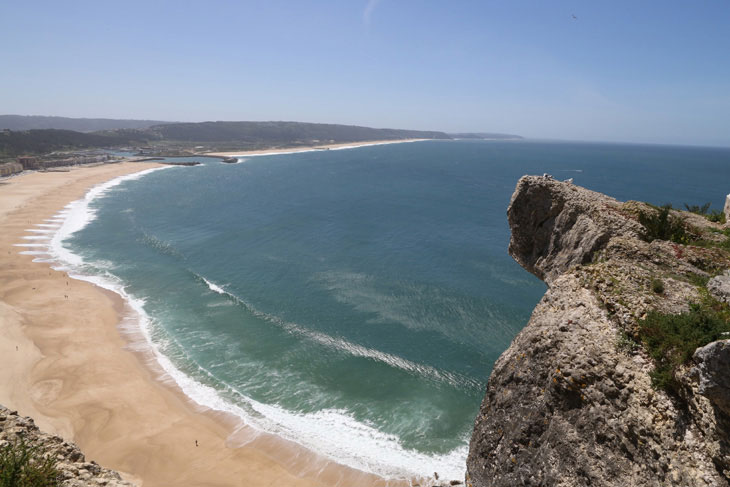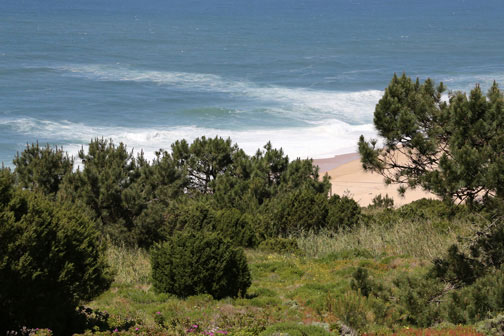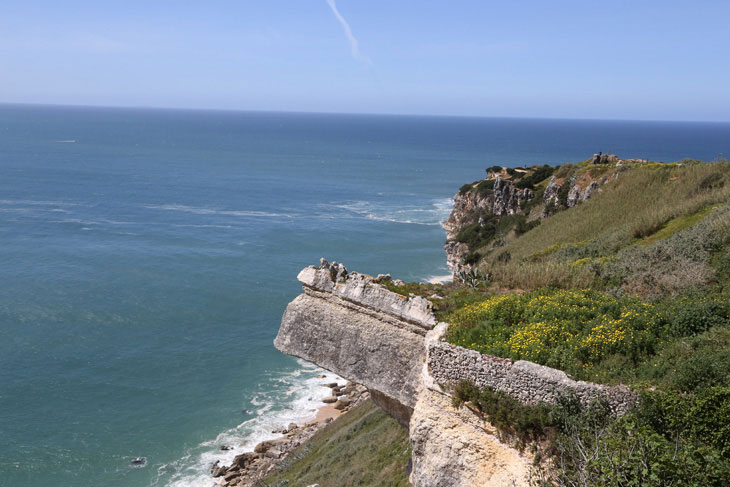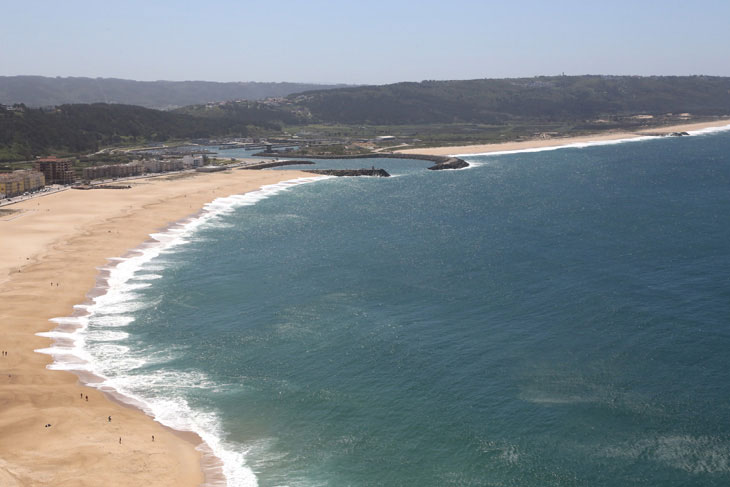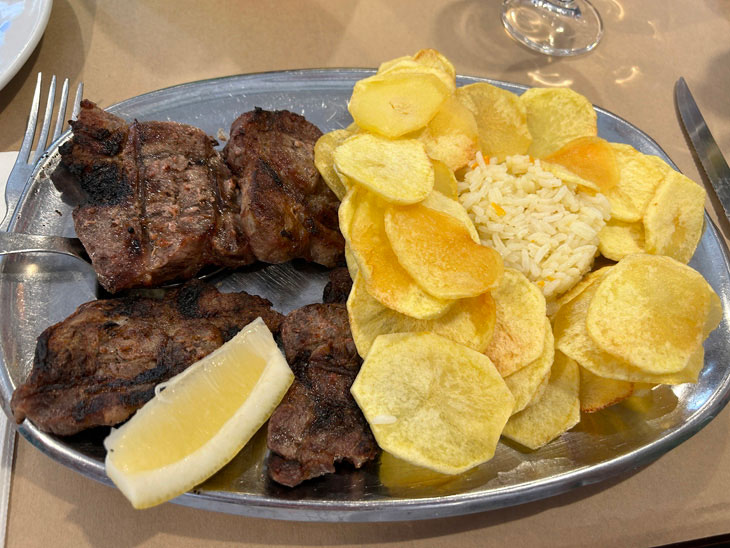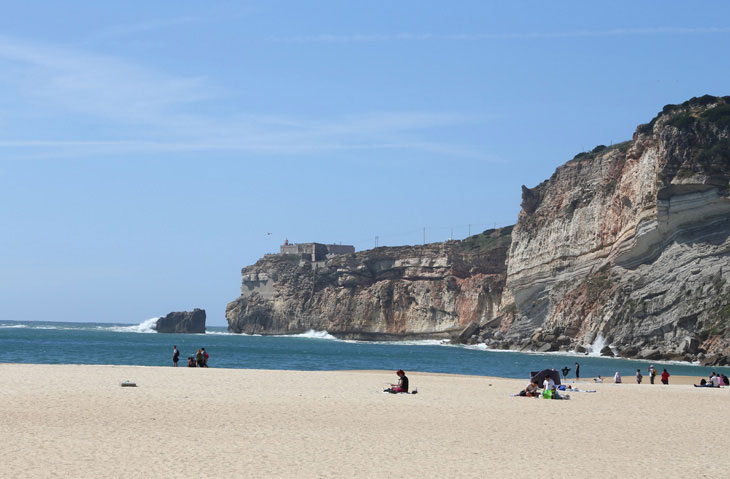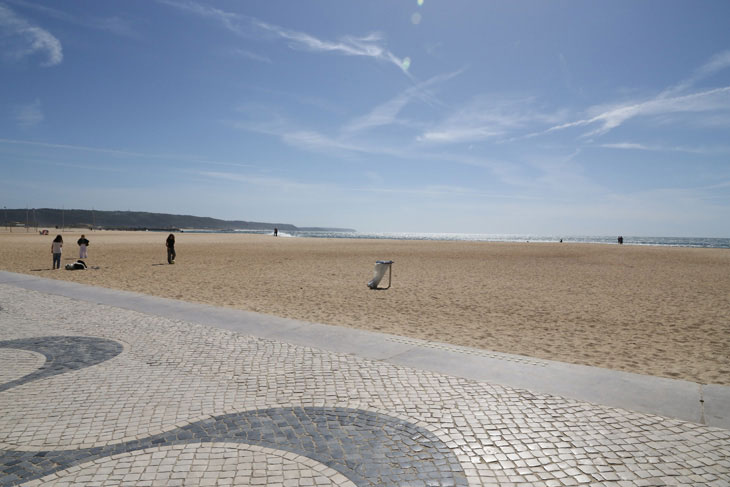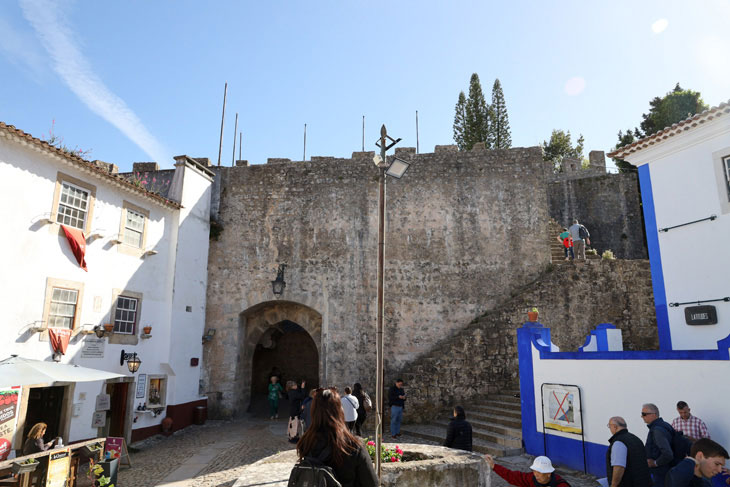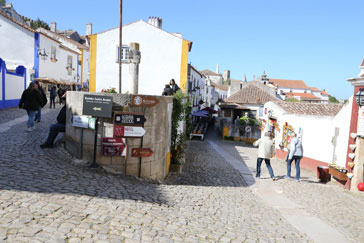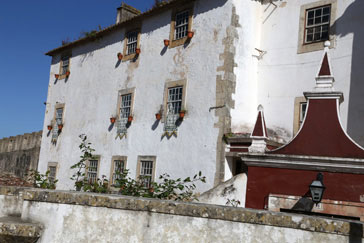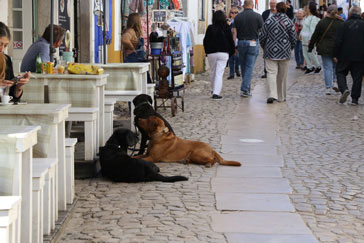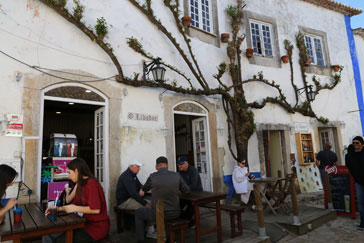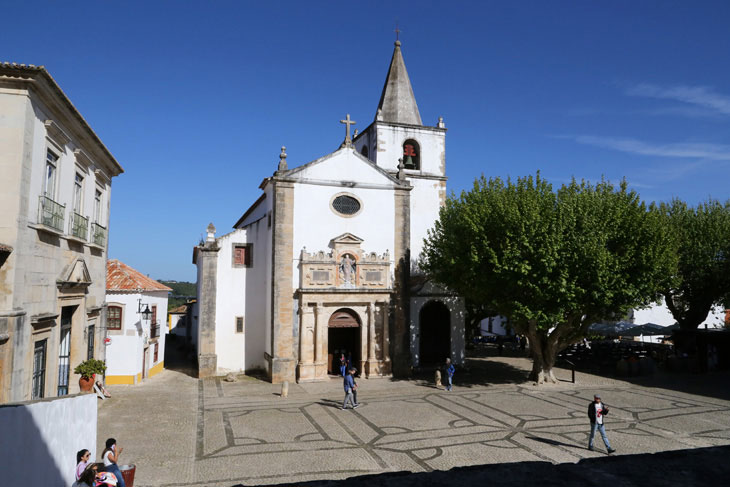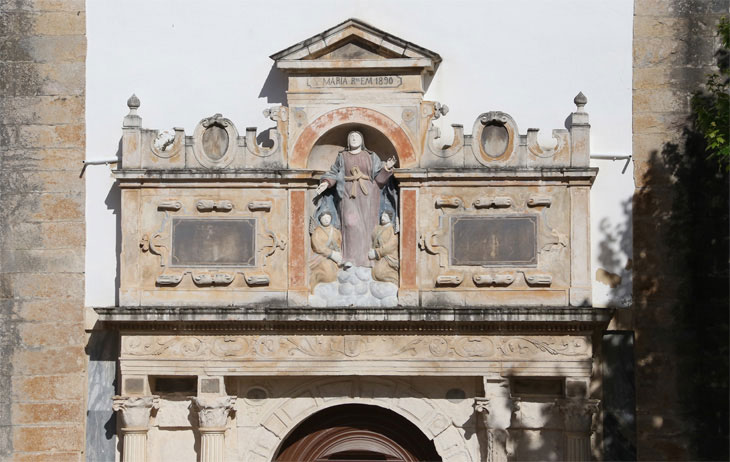Childhood Dreams
Fátima, Batalha Monastery, Nazaré, and Óbidos
After watching "100 Foot Wave", Nazaré was high on the list of places we wanted to visit in Portugal.
Although we wouldn't be there during big wave season, we were determined to at least see the town and the
beach and that incredible cliff with the lighthouse.
A day tour seemed to be the best option so I booked one that left from the busy Marquês de Pombal
traffic circle near our hotel. The crazy traffic racing around the circle brought back memories of the Arc
de Triomphe. We watched impatiently as other tour groups formed and departed until finally we were left
standing with three other couples. One of the women called the tour company several times, and eventually
they confessed that they were going to have to cancel the tour because they were unable to reach the tour
guide. We only had a few days left in Portugal, but when we returned to our hotel room I managed to book
another tour for our last day in Portugal.
On our second attempt, our guide, Francisco, showed up on time and we were soon on the way along with one
other couple and two young women who seemed to be related. This tour included a stop in Fátima, which
didn't thrill us, but one of the young women was absolutely giddy. It was clear that Fátima would be
the highlight of her trip, and she spoke longingly of wanting to visit the Vatican one day.
When we arrived, we stood under a cork tree at one end of a large open expanse looking toward the Basilica
of Our Lady of the Rosary of Fátima.
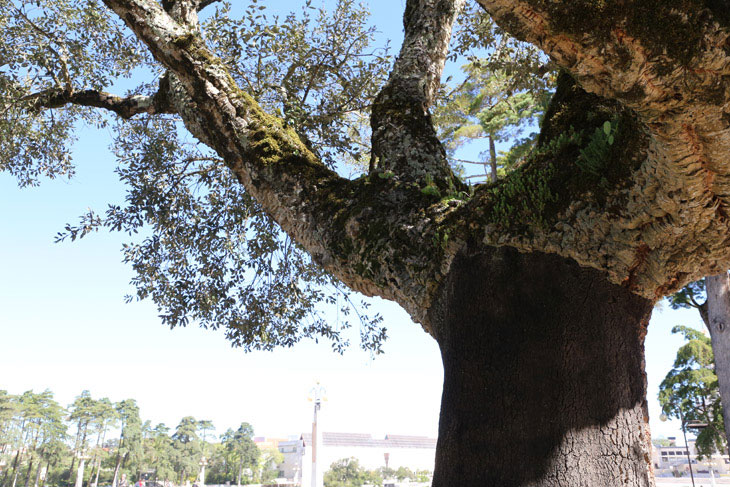
In 1917, three peasant children tending sheep near the village of Fátima had a vision of a woman
surrounded by light. She appeared five more times over the next five months to ask them to pray the rosary
for world peace and to impart three secrets to them. She also told them that God would perform a miracle on
October 13, and consequently a crowd of 70,000 gathered on that day to watch as the sun appeared to fall
toward earth. People began making pilgrimages to the site, and several years later, construction of the
complex began.
The huge open space could easily hold thousands of people, and apparently it does on the thirteenth day of
each month. Pilgrims set out on foot from different parts of the country along rural paths and roads to worship
at the site. Fortunately for us, there were not many people visiting on this day.

We wandered down to the church past various statues. Two of the children died shortly after the apparition
during the influenza pandemic of 1918-19, but the third became a nun and lived to the age of 97.
These mosaics adorn the outside walls of the church.
These pictures were taken inside.
I think we spent about an hour in Fátima, but Walt and I were ready to move on long before then.
Our next stop, the Batalha Monastery, was so huge, it was difficult to photograph. It was commissioned by King
John to commemorate Portugal's victory over the Castilians in 1385. Although construction continued over more
than 100 years, it was never completed.
Francisco pointed out this stone that had been marked by the stonemason who laid it. Such marks were counted
up and used to calculate the workmen's pay.
The statue is of Nuno Alvares Pereir, hero of the aforementioned battle. If you look closely, you will see
that the horse is standing with his right front and back legs both on the ground - an impossible feat.
I have seen some beautiful pictures of the inside of the building, but we only had time for a quick peek before
moving on to our next destination. Web sites describing the monastery recommend allocating 2 hours to fully
explore it.
It was finally time to head for Nazaré. We disembarked on the hilltop called O Sitio high above the lighthouse
featured in "100 Foot Wave". Unfortunately, tour vehicles are not permitted to drive beyond this point, and our time
here would be too short to walk down to the lighthouse and back up.
Several old women wearing colorful outfits were selling bags full of chocolate chunks, nuts, and crunchy cereal
They offered generous samples of their delicious treats.
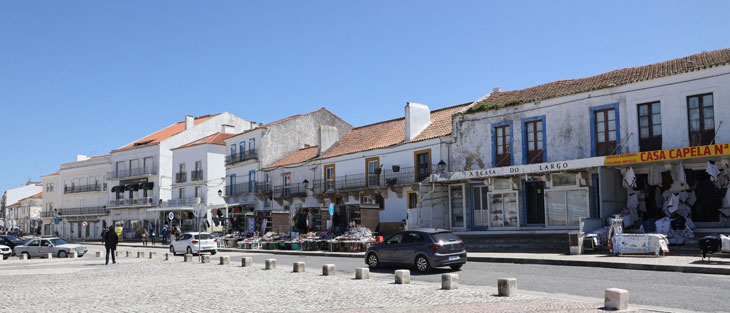
I was surprised to learn that making a pilgrimage to Nazaré was the goal of many Christians before the apparition
in Fátima. The Sanctuary of Our Lady of Nazaré, which houses a Black Madonna brought from Nazareth in 711,
is located here. The statue is believed to have been carved by Joseph the carpenter as the baby Jesus watched.
In 1182, a knight on horseback was chasing a deer on the hilltop when he was suddenly enveloped by a heavy fog, The
deer jumped over the edge high above the sea, and the horse was about to follow, but the knight realized that he was
next to the small grotto where the Black Madonna had been placed. He called upon her to save him, and she intervened.
Consequently, a small chapel was built over the statue, and pilgrims flocked to the site.
The church was built in 1377 to accommodate them and was enlarged and modified over the years.
I wandered over to the edge of the cliff to look at the view, and was stunned by its beauty. Francisco referred
to this side of the cliff as "the swimming beach". The big waves break on the other side of the cliff.
I walked down the cliff as far as I dared in the hope that I would be able to look down on the lighthouse, but
the allotted time here was short. I did come across this curious statue created by Adália Alberto. It has
a deer's head because of the story related above, and it looks out on the surfing side of the cliff where the
big waves crash.
One more picture of that incredible view.
Earlier in the day, Francisco asked if we would like him to make lunch reservations for us. Everyone agreed so
now he took us to a small neighborhood restaurant packed with locals. We crowded in, and the women at the
next table immediately began talking with us. They recommended the grilled black pork and potatoes so that's what
I ordered.
After lunch, we wandered down to the beach and sat watching the waves until it was time to head to the final
destination of the day - Óbidos. You can see the lighthouse on the end of the cliff in the picture below.
As we drove along, Francisco told us that we when we arrived in Óbidos we would be welcomed with a cup of
the famous local beverage called ginja, and then we would be expected to eat the cup it was served in. We weren't
sure what he was talking about, but we would soon find out.
He led us inside the city gates, gathered us in front of a shop window, and passed around tiny cups of the
liqueur made from sour cherries soaked in brandy. It was absolutely delicious. The cup itself, made from
dark chocolate, added the perfect finish.
Then we went our separate ways to explore the small medieval town.
I wandered down the upper street past restaurants and gift shops and bars selling cups of ginja. I was in
the mood to buy some last-minute souveniers but was disappointed to find that all the gift shops seemed to
be selling the same things I had seen in other gift shops in Portugal.
I passed the church of Santa Maria which was originally a Visigothic temple. When Portugal was ruled by
Muslims, it was converted to a mosque, and when they were defeated, it became a Christian church.
The street ends at the intriguing Óbidos Castle, but it was time to head back to the van.
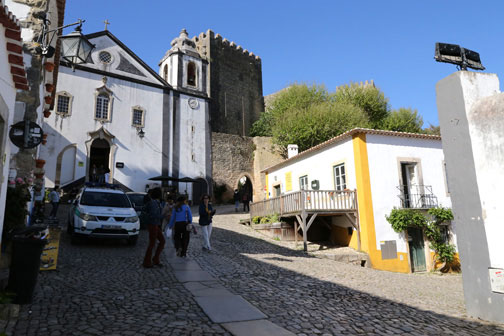
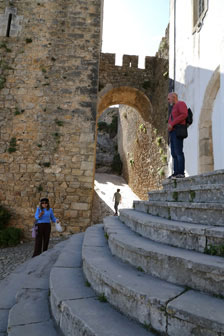
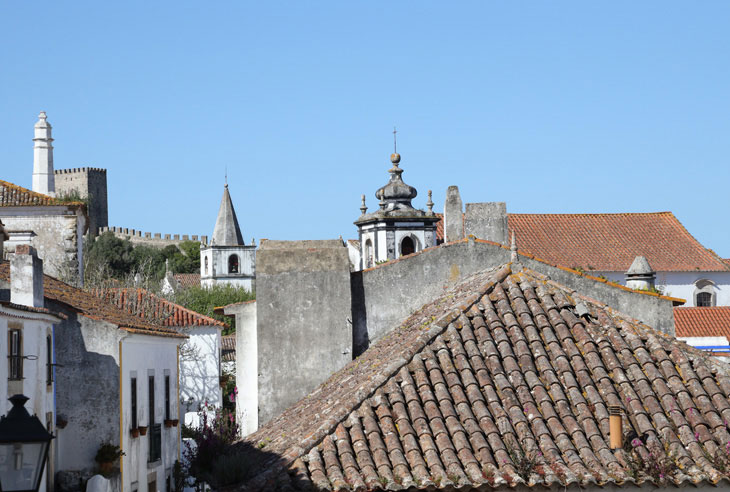
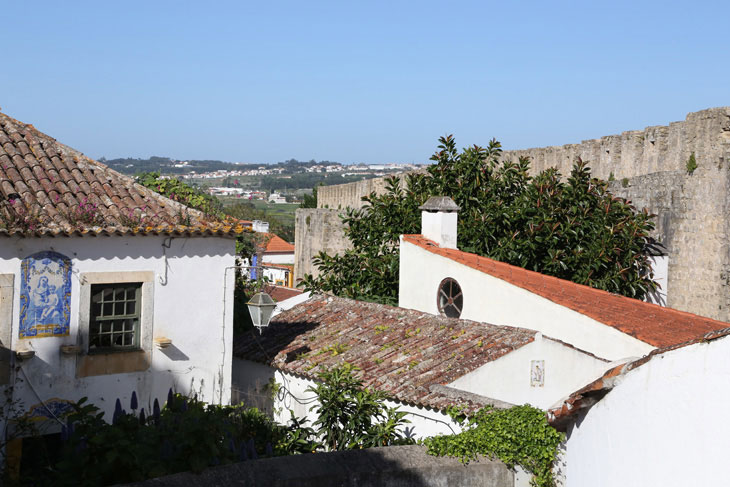
We arrived back at our hotel hours after we were supposed to. There had apparently been an accident on the
Marquês de Pombal traffic circle which had wide reaching effects on Lisbon's traffic. We crawled
along as other vehicles made sudden death-defying rushes at any open space on the road. Francisco made a
few startling rushes of his own. We were glad we weren't driving, and tried not to watch too closely.
It had been an enjoyable day although if we were on our own we would have spent more time on O Sitio in
Nazaré and at the Batalha Monastery and skipped Fátima entirely, but all the day tours that were
available stopped in Fátima so that wasn't an option.
Sadly, our time in Portugal was also ending. I really enjoyed and admired the Portuguese people. At a
time when the residents of cities like Barcelona were feeling overwhelmed and spraying tourists with water
pistols, the people of Portugal were always welcoming and courteous. I cherish my memories of our time there.


